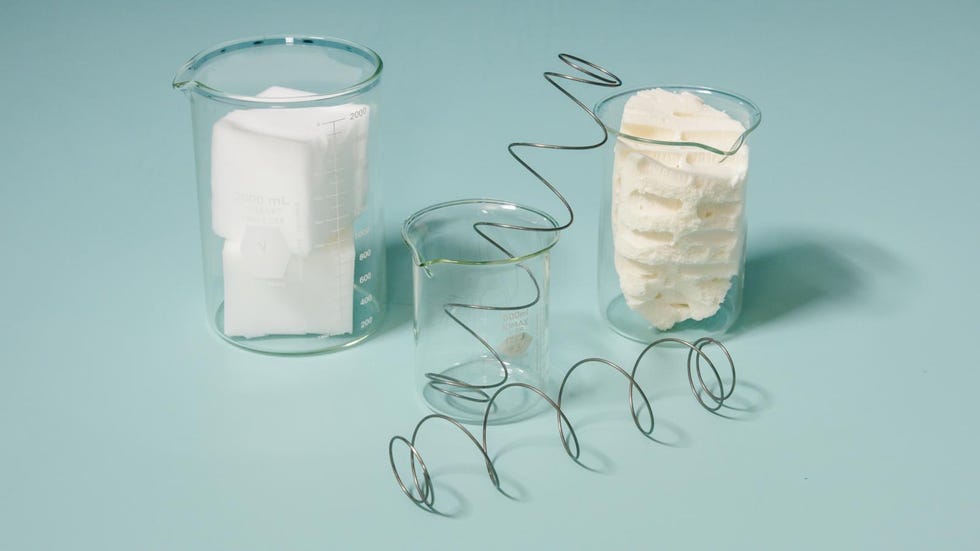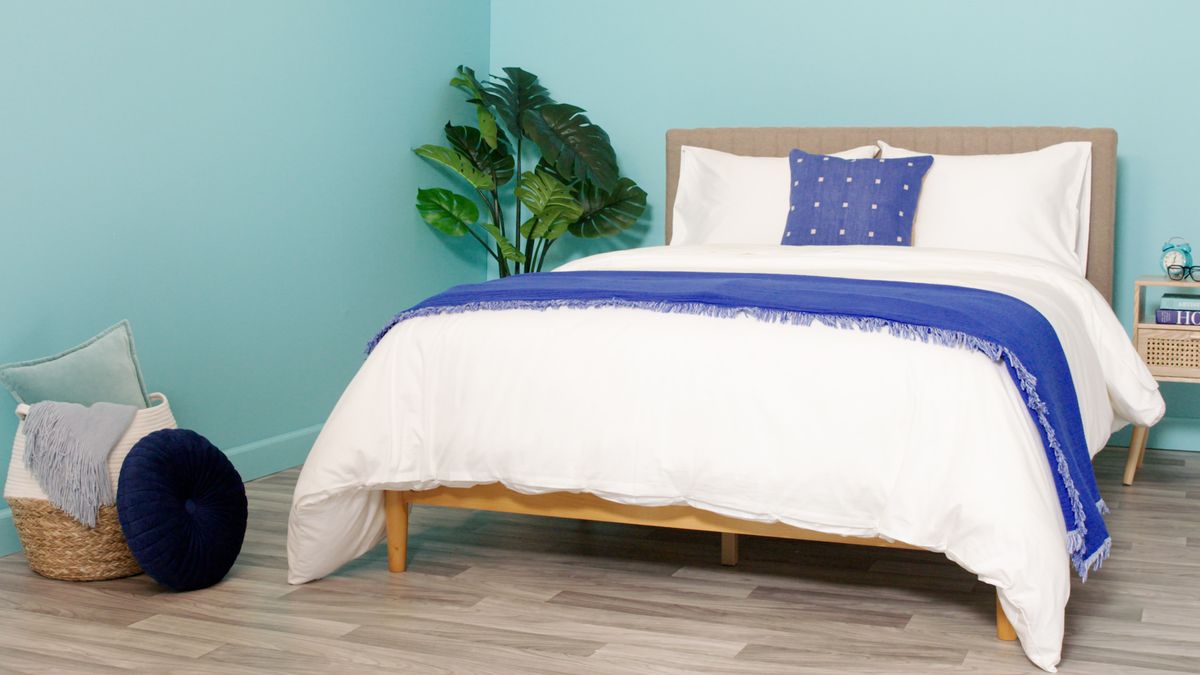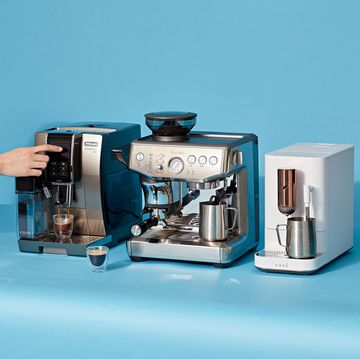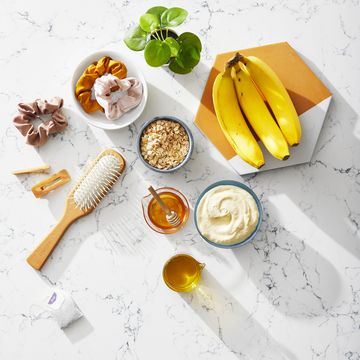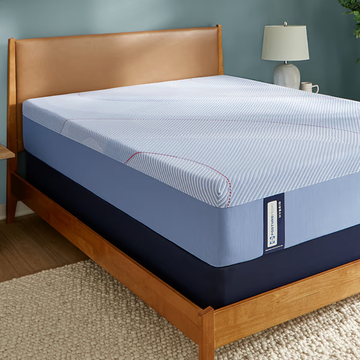Waking up on the wrong side of the bed can start your day on the wrong note (quality sleep is crucial!), but there's no such thing as the wrong side of the bed when you have the right mattress. Before you go to your nearest store or do a search for the best mattresses, taking the time to understand the different types of mattresses will ultimately help you create the ideal bed for you.
What are the different types of mattresses?
The five main types of mattresses are innerspring, foam, hybrid, latex and smart mattresses, says Textiles, Paper & Apparel Lab Product Analyst Grace Wu, a materials scientist and our residential mattress expert here at the Good Housekeeping Institute. These are the features and characteristics of these mattresses you will see while shopping for a new one:
Innerspring & coil
The most "traditional" mattress type, innerspring mattresses have that classic feel of a firm, bouncy mattress. Innerspring mattresses are made with a coil base with minimal foam and padding on top. Featuring springy coils and fewer layers of cushioning, these mattresses are ideal for those who like a firmer mattress, more support, a bit of bounce and excellent breathability. Our pros in the Textiles Lab have also found that coils take longer than foam to break down, so they should last longer than other types of mattresses. Plus, innerspring mattresses are typically affordable and durable, so you're truly getting a bang for your buck.
Sleeping with a partner on an innerspring bed may be bothersome if one person moves often in their sleep because there is less motion isolation (so you'll feel the bed bounce as they shift positions). Times have changed, though, and new innovations in the mattress industry have improved upon this issue. "Nowadays, the coils are almost always pocketed, which is essential for use on an adjustable bed, but also helps reduce a bit of motion transfer," Wu explains.
Beyond that, innerspring mattresses can also feature zoned coils that provide varying levels of support in different areas along the mattress. There are typically three zones along the entire bed, with a firmer midsection for support near the hips and softer head and feet sections. But, there can be five or even seven zones. "Certain areas like the shoulders or hips may need a bit more support or give to maintain a neutral spinal alignment," Wu says.
Some innerspring mattresses even have reinforced coils along the edges of mattresses to help with edge support. This means you can sit on the edge of your mattress without the bed sinking in and you consequently slipping off, which can happen with some foam mattresses. Edge support can be especially important for those who have trouble getting into and out of bed, and need a stable spot to sit as you climb in and out.
Back in the day, coil mattresses were flippable, but Wu says the newer ones are less so due to innovations like comfort layers, one-sided designs and zoned coils. So, make sure your mattress is actually 100% flippable before you rotate and flip it over.
RELATED: The Best Innerspring Mattresses
Pillow-top mattresses
Pillow-top mattresses are essentially innerspring mattresses with one additional feature: an extra layer of cushioning on the top of the mattresses known as a pillow top or Euro top.
"A pillow top is an additional gusseted layer of padding sewn onto the top of the mattress with a small gap, resembling a pillow," Wu says. "It's often filled with fiber, foam or a combination of the two and intended to appear cushiony and inviting. As a result, the top few layers of the bed appear separated, like a built-in mattress topper or feather bed." Euro tops are similar, but they lie flatter without the "raised" look, and traditional flat or tight tops are quilted tops on a mattress without any of these special features.
RELATED: The Best Pillow-Top Mattresses
Foam
Foam mattresses are made with several layers of foam, which are typically polyurethane foam or memory foam. Memory foam creates that iconic "sink-in" feel, but it's technically just a variation of polyurethane with a slower response time. Many foam mattresses have a firm base layer for support with layers of cushioning for comfort, creating different levels of firmness to choose from. "You can find foam mattresses of all kinds of firmness, but the firmest foam won’t feel as firm as the firmest innerspring bed by the nature of the material," Wu explains.
In the 2010s, memory foam took over the mattress industry as the new hot thing (figuratively and quite literally). While foam provides a sink-in feeling with great motion isolation and pressure relief, it traps heat. So, it's not the best choice for hot sleepers, but it's great for side sleepers and those with back pain. However, new innovations and technology around cooling mattresses are seeking to minimize overheating. "You’ll see charcoal- and gel-infused foams which are designed to pull and wick away heat, as well as Phase Change Materials (PCM) embedded in foam layers," Wu says.
Foam mattresses are usually the most lightweight option, so they're great for those who frequently move or need a boxed mattress that's easy to set up by themselves. They're also on the cheaper side like innerspring mattresses, but there are plenty of high-end options with advanced technology. Zones in foam mattresses are also becoming popular, similar to zoned coils.
RELATED: The Best Memory Foam Mattresses
Hybrid
Hybrid mattresses offer the best of both worlds, combining traditional coils with thick layers of foam to create a bed that provides comfort from the foam with firmer support from the coils. "The surface tends to feel like memory foam, but with more breathability and support," says Executive Director Lexie Sachs.
Hybrid mattresses generally either have a pillowy or a foamy feel, and they can feel similar to a pillow-top mattress. "The key is that you’ll feel like you’re sleeping 'on top of' your bed with these, while you’ll sink into or feel like you’re sleeping 'in' the more foam-adjacent models," Wu says.
While on the pricey side, Wu says hybrid mattresses have grown in popularity in the past few years and they tend to have the most bells and whistles (hence the higher price tag). Features like zoned coils and coiling technology make hybrid mattresses a crowd-pleasing option among our at-home testers and a top performer in our tests.
RELATED: The Best Hybrid Mattresses
Latex
Latex mattresses are similar to foam, but they are more resilient and responsive, creating more bounce and less sinking in. Latex also tends to be on the expensive side as it costs more to produce compared to foam. These mattresses are great at distributing your body weight and have a springy feel without being as firm as innerspring mattresses. "When you lie on it, you almost feel like you’re floating," Wu says, who recommends latex mattresses for those who want pressure relief and that sleeping "on top of" your bed feel. In our tests, fans of innerspring mattresses and foam hybrids typically liked the feel of latex.
The foam in latex is made from the sap of rubber trees and they are often made with organic materials — look for a Global Organic Latex Standard (GOLS) certification. Latex foam is less prone to overheating than memory foam, but it's not the best at motion isolation. As with other types of mattresses, there are zoned latex options as well.
There are generally two types of latex:
- Dunlop latex: This is the denser, firmer and more popular option of the two.
- Talalay latex: Softer and more cushiony, Talalay uses more air to create the mattress.
RELATED: The Best Latex Mattresses
Adjustable or smart
Last but not least, smart or adjustable mattresses are a luxe, high-tech option for those who need help with creating an ideal sleeping environment or have different preferences than their partners. Adjustable mattresses are the most popular variation of the smart options and they offer customizable firmness options. "Adjustable mattresses are an investment, but finding the right firmness is the number-one concern for the over 10,000 people we’ve surveyed, so it can be worth the splurge," Wu says.
Some smart mattresses can customize the temperature, so hot sleepers can cool down their side of the bed and their colder partners can keep their side warm. Note that smart and adjustable mattresses are different from adjustable beds, which are bases that raise the head and foot of the bed for those who need elevation or assistance with getting up.
RELATED: The Best Smart Mattresses and Beds
Alternative mattresses
Beyond these main types of mattresses, there are a few unconventional options and other types of materials in mattresses you may see while shopping. Here are a few examples:
- Gel grids: The brand Purple creates foam and hybrid mattresses with a hyper-elastic polymer grid (their GelFlex Grid) that is single layer at the top. This is unlike any other mattress in the market. It's a bit odd feeling upon first touch (since it's one of a kind!), but GH testers loved it and our pros gave the brand's mattresses high marks in testing. READ OUR FULL REVIEW: Purple Mattress
- Futon mattresses: Similar to sleeper sofas and futon couches, futon mattresses can sit on a frame that converts from a sofa to a bed. That way, you or a guest can sleep on a real mattress rather than couch cushions. "Other modern futon mattresses embrace their Japanese roots, and simply roll out on the floor," Wu says. You can generally find futon mattresses in all-foam, latex, innerspring, hybrid or Japanese tatami-style options.
- Air mattresses: Typically made of PVC, TPU or rubber, these inflatable mattresses can be used on the go for camping, temporary housing situations or for overnight guests. Some air mattresses have built-in pumps and just need batteries, while others need a separate pump or need to be plugged into an outlet.
- RV mattresses: These are specifically sized for use in a recreational vehicle (RV) or camper van. Some mattress brands even offer extended sizing that includes RV sizes, so you can get the same mattress you have in your home for your RV.
- Waterbeds: As the name says, waterbeds are filled with water. These beds became available in the '70s and more common in the '80s, but have decreased in popularity since then. Waterbeds can provide pressure relief because the bed conforms to your body shape, but the lack of firmness can make it difficult to move and it does not support spinal alignment.
How to choose the right mattress
At the end of the day, the "right" mattress is entirely up to your personal preferences — but, there are features in each type that may make one better or worse for you than other options. You can read our in-depth guide with advice from experts on how to choose the right mattress that will suit your sleeping style, budget and preferences here: How to Choose a Mattress. At a glance, here are a few key points we recommend considering when choosing the right mattress type for you:
✔️ Firmness: Side sleepers, back sleepers and stomach sleepers will each benefit from a specific type of mattress. Firmer mattresses are best for heavier body types, while a softer mattress is better suited for a lighter body frame. The key is to choose a firmness that will properly align your spine.
✔️ Comfort: The number one priority in a mattress is making sure you feel comfortable when you lay on it (or else, how will you fall asleep!). Try testing out some mattresses in a nearby store so that you can gauge which types of mattresses feel the most comfortable to you.
✔️ Heat regulation: If you run hot at night, foam mattresses may not be your best friend. Memory foam traps heat, which in turn can make you feel sweatier and hotter as you sleep. Try mattress types with better breathability and airflow, like innerspring and latex, or check out foam and hybrid mattresses with added cooling technology.
✔️ Motion isolation: If one partner moves a lot in their sleep (guilty), the other may be kept awake or woken up by the bouncing and movement. Foam mattresses have better motion isolation, but hybrid mattresses can also be an option if you prefer coils.
✔️ Budget: Repeat after me: A higher price doesn't always mean it's a better mattress. Innerspring mattresses tend to be the least expensive option, but that doesn't necessarily mean foam or latex mattresses are better for you. And within each type of mattress, you can find one that fits your budget. There are tons of high-quality mattresses (check out our best value picks in any of our mattress reviews).
Why trust Good Housekeeping?
The experts in the Good Housekeeping Institute Textiles Lab have tested bedding and home products for over a century. Our pros consistently research, evaluate and review hundreds of mattresses every year. We also enlist consumer testers to provide their feedback after sleeping on mattresses at home.
Isabella Cavallo is the assistant commerce editor at the GH Institute. She has written about all sorts of mattresses in reviews and retail sales announcements, including the best mattresses on Amazon. To write this story, Cavallo consulted Grace Wu, the Textiles, Paper & Apparel Lab product analyst at the GH Institute. Wu has years of experience testing mattresses, coordinating consumer testing and reviewing all types of mattresses. She also has a Master of Engineering in materials science & engineering and a Bachelor of Science in fiber science from Cornell University.
Isabella (she/her) covers commerce and product-related content in the home, lifestyle, fitness, technology and beauty. She graduated from Binghamton University in 2022 with a bachelor’s degree in English: Literature & Rhetoric. Before joining GH, she was an editorial assistant at Prevention, where she covered health topics and celebrity news.
Grace Wu (she/her) is a product reviews analyst at the Good Housekeeping Institute's Textiles, Paper and Apparel Lab, where she evaluates fabric-based products using specialized equipment and consumer tester data. Prior to starting at Good Housekeeping in 2022, she earned a master of engineering in materials science and engineering and a bachelor of science in fiber science from Cornell University. While earning her degrees, Grace worked in research laboratories for smart textiles and nanotechnology and held internships at Open Style Lab and Rent the Runway.

